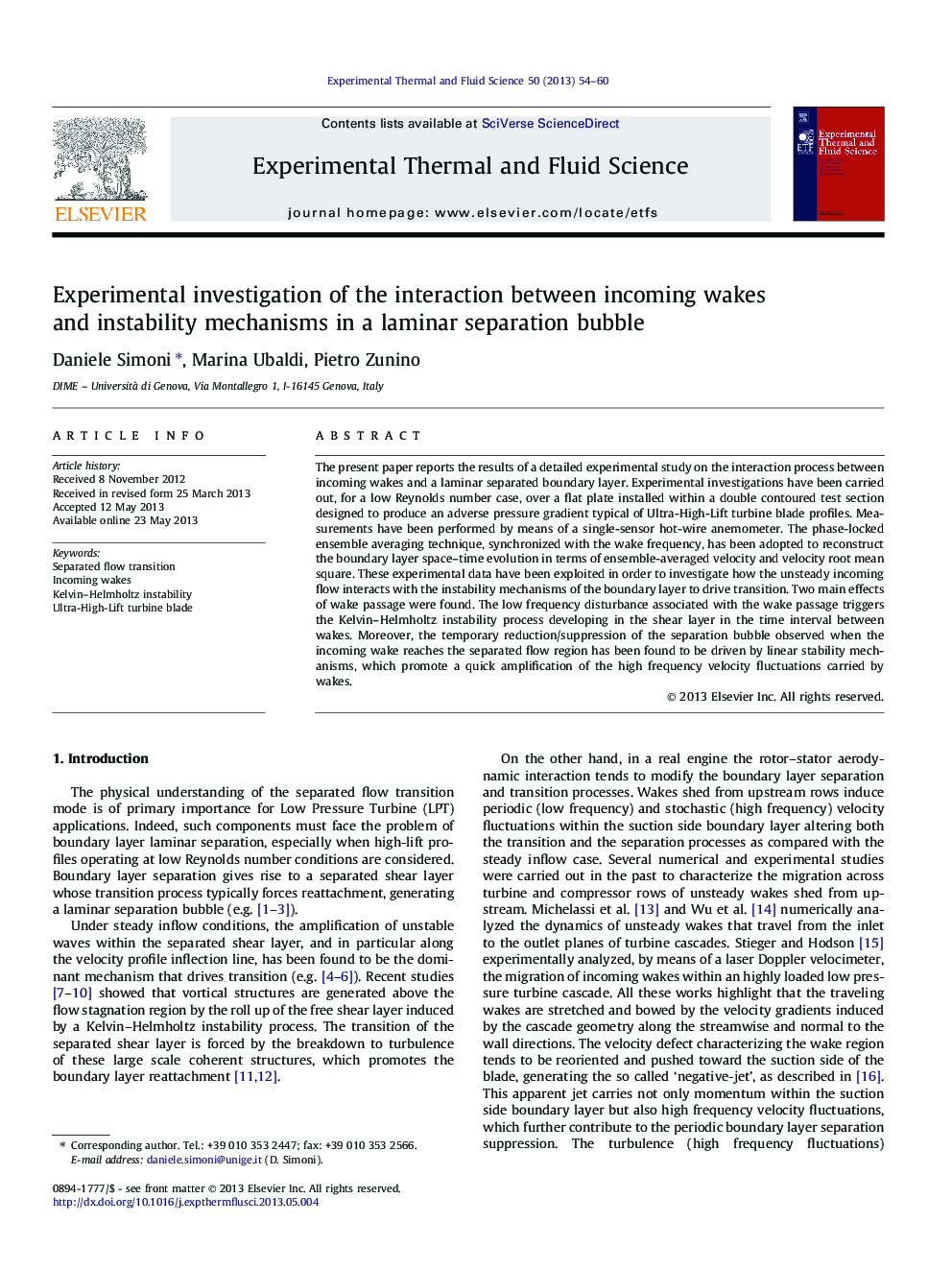| کد مقاله | کد نشریه | سال انتشار | مقاله انگلیسی | نسخه تمام متن |
|---|---|---|---|---|
| 651399 | 1457426 | 2013 | 7 صفحه PDF | دانلود رایگان |

• Interaction between incoming wakes and laminar separated boundary layer.
• Temporary reduction/suppression of the separation bubble.
• Wake passage triggers the Kelvin–Helmholtz instability in the interval between wakes.
• Linear instability mechanisms drive the amplification of velocity fluctuations carried by wakes.
• Separation bubble starts to be reduced when velocity fluctuations reach saturation.
The present paper reports the results of a detailed experimental study on the interaction process between incoming wakes and a laminar separated boundary layer. Experimental investigations have been carried out, for a low Reynolds number case, over a flat plate installed within a double contoured test section designed to produce an adverse pressure gradient typical of Ultra-High-Lift turbine blade profiles. Measurements have been performed by means of a single-sensor hot-wire anemometer. The phase-locked ensemble averaging technique, synchronized with the wake frequency, has been adopted to reconstruct the boundary layer space–time evolution in terms of ensemble-averaged velocity and velocity root mean square. These experimental data have been exploited in order to investigate how the unsteady incoming flow interacts with the instability mechanisms of the boundary layer to drive transition. Two main effects of wake passage were found. The low frequency disturbance associated with the wake passage triggers the Kelvin–Helmholtz instability process developing in the shear layer in the time interval between wakes. Moreover, the temporary reduction/suppression of the separation bubble observed when the incoming wake reaches the separated flow region has been found to be driven by linear stability mechanisms, which promote a quick amplification of the high frequency velocity fluctuations carried by wakes.
Journal: Experimental Thermal and Fluid Science - Volume 50, October 2013, Pages 54–60